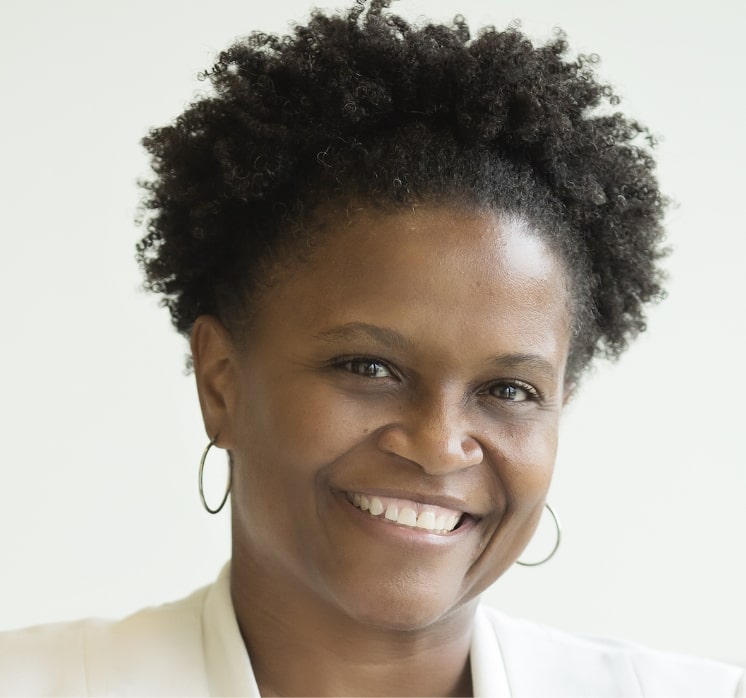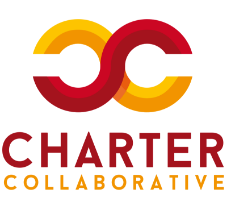
Karen Venable-Croft
Co-founder & Executive Director,
Girls Global Academy Public Charter School
Girls Global Academy Public Charter School
Location: Washington, DC
Year Opened: 2020
Student enrollment: 66
Grades served: 9th grade
Website: www.girlsglobalacademy.org
Student Demographics
Black/African-American: 89%
Hispanic/ Latino: 8%
Hawaiian/Pacific Islander: 1.5%
Two or more races: 1.5%
Homeless Students: 43
FRPM/FRPL %: 50%
Students with Disabilities: 32%
ELL/ESL Students: 0%
THE POWER OF CHOICE
My story starts all the way back when I was a young girl. My parents are native Washingtonians. When I was a young girl, to make ends meet, my mom opened up a daycare in our home. My mom taught me how to be an entrepreneur and the importance of education and having a good start. That’s what she did for all of the children who came through our home for all of those years. I remember one girl specifically, because I taught her how to write her name. It was only four letters, but that was my first opportunity to understand the power of someone knowing who you are and knowing your name.
Since that time, I have always found myself engaged in opportunities to teach and support students. In high school, I really started to understand that what adults say to students has a real influence on the path they can go down, positive or negative. When I was in my 9th grade year, a teacher made a decision to speak about my intellectual capacity and I started to think about what the avenue is to help other girls to be constructive, to make changes.
As a senior in high school, I found myself not wanting to go to college, but my mom said, “Karen, you know education is very important. I held all of these jobs because I wanted my children to have different choices than I had.” She said she could only afford for me to apply to four schools, so I begrudgingly picked schools out of a big book and applied. I got into all four of those schools. Luckily, I was able to get a scholarship, because I didn’t want to put a financial burden on my parents.
I attended West Virginia University, which was very eye-opening for me, because I wasn’t accustomed to going to a school where the student body was predominantly white. I was able to hear and be a part of a community that was different from the one I was accustomed to. That, for me, was the first stepping stone where I could understand that there’s power when you have choices. That’s been the cornerstone for me throughout my life.
I was the first person in my family to be able to graduate from college. At first, I didn’t know I wanted to be an educator, but the moment I stepped into the classroom, I knew I was going to make a career of education. There’s so much power and uplift to being around students. It’s such a privilege to be around such inquisitive, brilliant minds. For the last 20 years, students keep impressing me. Being connected to students is what fuels the work and inspires me to make the decisions I do.
I was inspired to become a leader, because I was able to be in spaces where my voice mattered and to collaborate with others. I felt that I was able to listen, make staff feel that their voice matters, develop programs based on what I was hearing, and include staff in those decisions. It wasn’t just about the student growth. It became about how I could become the best advocate for adults so that they could be their best when they’re providing instruction or supporting students.
A GLOBAL SISTERHOOD
People think that an all-girls school is isolating, but what it really does is provide the space for girls to know that they can be and do anything. Every time they look to the left, to the right, to the front or behind, there’s a student who looks like them who’s speaking up, answering questions, working with others. Girls need to be able to be around and with other students that can uplift and support them and allow them to be and work with each other, even though it can be challenging.
Girls Global Academy (GGA) disrupts the idea of “I’m the only one.” Our focus is on using the International Baccalaureate Career program to give every student the opportunity to take Engineering and Business classes and be a part of technical subjects where Black and Brown girls and women are underrepresented. Even when they are represented, sometimes they don’t persevere because they don’t have a mentor or they’re the only one. The language we have at GGA is “I’m one of many. This is the story of me, and this is the story of us.”
Our mission is fostering pathways to lead and learn. All of our students can be on different pathways, but they can cross over and jump onto pathways with each other. We want to give them a path so they can understand what’s important to them and speak and stand in their own truth. Shayne Swift, my co-founder and sister in the work, and I want the world to be our students’ backyard. They should be able to interact with people in different cultures and with different ways of thinking. We want our students to always remember that they are part of something big.
Being able to have staff that bring in a global aspect throughout the day from different perspectives is really important. We have staff that represents our student body. Sixty percent of staff identify as African American. We also have staff who identify as multiracial, staff members from the Latinx community, staff who consider themselves Middle Eastern, and staff that identify as White. When we put their stories together, it becomes the story of us. Students are around people who are like them and different from them.
We have about 65 students currently enrolled. Students come from all over the city but are predominantly from Wards 5, 7, and 8. What’s most appealing to them is the opportunity to be exposed no matter what your learning difference is. Students like that they have an opportunity to be part of an Engineering class when you first come; they don’t have to test into it. Families like the idea of their children being empowered and having confidence, the idea of being able to develop that through experience.
Our students are designers, problem solvers, and thinkers. Our students are learning how to craft emails, which maybe a small piece, but is so applicable to the real world, because you need to be able to communicate with people outside your community. We’re always looking for ways to bring the real world into our classrooms. Our students engaged in a digital exchange program over the summer where they conversed and met with students in Morocco. Recently, one of our students was in an Engineering class designing an outdoor education space. She said, “Even I could possibly open up a school.” Just the idea that she was able to make the connection between designing an outdoor education space and possibly opening a school in the future was evidence that she understands the power of opportunity, the power of exposure.
COVID-19 IMPACTS
From an equity standpoint, we need to be mindful that students are in their homes and don’t have the same opportunities to focus that they have when they’re in school. They’ve turned their room or their couch or their floor into their classroom, which is challenging for some students. It takes time to learn how to turn your home space into a learning environment. As much as teaching is about the content, it’s about making sure students are comfortable. That means slowing down and being deliberate in the language that you use.
Students and teachers are trying to learn how to build relationships in a virtual setting. We are continually adapting and learning and changing. It’s a lot more difficult and challenging than people think. It’s more than a computer, it’s about a culture. It’s about being able to get everyone on the same page, being able to enforce norms when students aren’t here, reducing the distance when it seems like there’s so much distance. COVID has altered the face of what education is right now. It’s making educators be more creative, it’s making our principal be more deliberate about what the professional learning environment for staff looks like.
WOMEN LEADERS OF COLOR MATTER
Having two women of color leading a school gives students and families the idea that you can be a person of color and be in a position of authority and still listen and make decisions and keep your students at the center. When there’s adversity, we’re able to support students through that so that they don’t give up or shut down. We’ll work on that forever. We must always provide an opportunity for voice and show students how they can use their voices to make change.
Being a leader of color right now is very challenging, because we’re a startup and there are so many moving pieces. Witnessing other leaders of color being able to stand in and stand up and have a voice at the table is important. There are many leaders of color in the city who are standing up for those of us who can’t get to the table. Standing up and standing with each other is very valuable. Reaching out and extending a hand to other leaders of color is important. It provides an example for individuals like me who are new leaders of color in this landscape.
For me, the future of education looks like interactions between students and people from other places. In this world, you don’t really work alone, you’re working with other people. Learning should be challenging, meaningful, and joyful. Those three things should be part of every lesson, every discussion, every interaction that students have. It’s not always about the educational pieces; it’s about the pieces that uphold education. It’s the behind the scenes work that needs to take place. Our students are part of designing the learning environment so that it can be the best for them, so they can learn what they want to learn, how they want to learn it. I want our students to always know there is freedom in education. Education is a right and it is our responsibility to ensure that we do all that we can to make sure it is possible.
